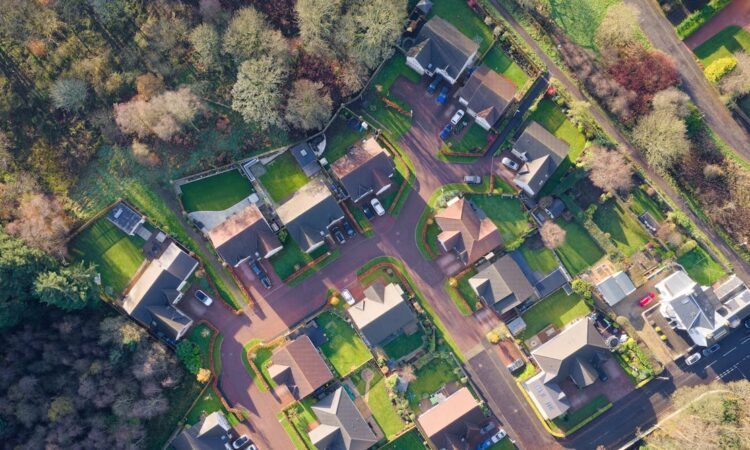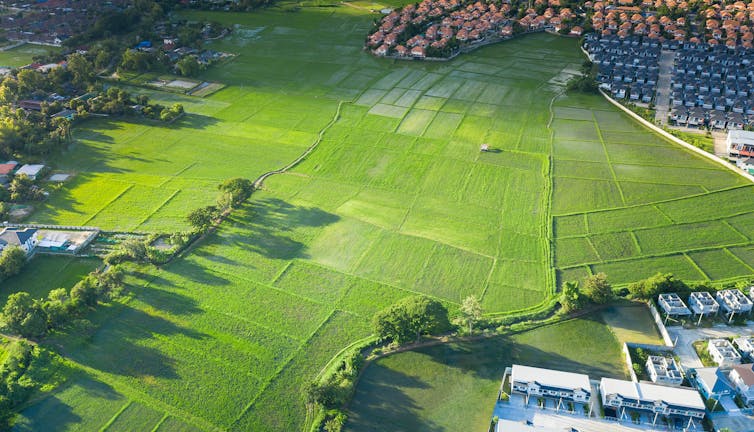England’s rural housing crisis could be solved by fixing land prices and bringing land into public ownership

Young people are reportedly being priced out of rural communities by soaring housing costs. Official statistics for England show that affordability in rural parts of the country is worse than in towns and cities, excluding London. In 2021, even the cheapest houses in rural areas cost around 9.2 times more than the earnings of the lowest paid workers. In urban areas, it was eight times more.
Since Brexit, there has been a rise in the number of landlords transferring long-term rental housing into short-term lettings on platforms like Airbnb, in a bid to cash in on the growing staycation market. COVID has increased the appeal of rural living, with more people buying second homes. Affordability has worsened since 2020.
These recent pressures have accentuated the decades-old trends of general counter-urbanisation and demand for rural homes that my colleagues and I discuss in our 2022 book, Village Housing.
A combination of planning constraint and external demand pressures, focused on the smallest villages and hamlets, is driving land price expectation and making it difficult to build affordable homes. Land values belong to the communities that create them. A way needs to be found of fixing the cost of land at a price that supports the delivery of affordable homes in rural locations.

Lāsma Artmane|Unsplash
Upward pressure on land price
Rural planning authorities largely operate according to the rationale that housing and service needs can more effectively be met in towns than in the countryside. They generally respond to increased housing demand in rural areas by allocating sites in service centres and larger towns for new development. They also fix policies in local plans that require the inclusion of affordable homes in market-led schemes.
Far less gets built in villages. There, the existing stock is gradually sold as investment opportunities to wealthier incomers or to seasonal and weekend residents. This dynamic places upward pressure on land prices.
In those few instances where sites for market development are allocated in smaller villages, land price soars. The resulting housing is high end and unaffordable to local people.
It is within this challenging market that registered providers of social housing and community land trusts, formed by groups of concerned residents, try to secure affordable land for affordable housing through the so-called “rural exception site” approach.
Since 1991, communities have been able to work with partners on securing exceptional planning permission for affordable homes on small parcels of unallocated land (sufficient for up to a dozen homes, depending on the scale of proven local need) on which permission for housing would not normally be granted.
Getting a landowner to accept that this is an “exception” to normal planning – and not a regular allocation – is a key hurdle. The landowner needs to agree to sell plots at a price that supports affordability.

DifferR|Shutterstock
Affordable land supports affordable housing
Since 2012, exception sites have been able to include market housing, whose role is to support project viability in a context of falling grant rates. Those grants are channelled to registered providers by Homes England, a government agency sponsored by the Department for Levelling Up, Housing and Communities. Government has been targeting grant-free development, with the help of the market, although exception sites usually need some grants to achieve viability.
But the inclusion of market homes on rural exception sites comes at a cost. Landowners’ price expectations are raised, driving up the price paid for land, and meaning that an ever larger component of market housing is needed to cross-subsidise the affordable element. Bigger developments comprising more homes for sale, and relatively fewer affordable homes for local need, will not gain the same level of community support.
Threats to the viability of rural exception sites, largely because of rising land costs, means that communities stand to lose a critical source of affordable homes in otherwise unaffordable villages. The question is what can be done about this.

Mr Doomits|Shutterstock
Raising grant rates would allow social housing providers (or taxpayers) to bear higher land costs. But our research notes that this is unlikely to happen given public funding constraints and governments’ preference for market support. And in any case, the justice of such an approach (taxpayers effectively subsidising landowners’ rent extractions) is questionable.
A fairer approach would be to fix the cost of land at a price that supports a range of affordable housing types. That fix can be achieved by setting an advisory price for rural exception sites in national planning policy or, where an advisory price does not encourage sale, by using simplified and remodelled compulsory purchase powers to bring land into public ownership. Experience elsewhere in the UK shows that the prospect of compulsory purchase is often enough to encourage landowners to sell.
Our research has shown that the land price that typically supports affordability on rural exception sites is £10,000 per plot. Assuming a valuation density of 35 dwellings per hectare, this figure is far higher than agricultural value (£600 for a similarly-sized plot), but far lower than full residential value (£150,000, say, in South Cambridgeshire).
Some landowners will accept a price that supports affordability, motivated by a desire to help their communities. Others will resist sale at any price short of full residential value. Right now, however, too much is being left to the market.
Local authorities need the power to bring small plots of land into public ownership, quickly and at an affordable price. This would enable registered providers and community land trusts, and also local councils, to match their building programmes to the scale of need for rural housing.
